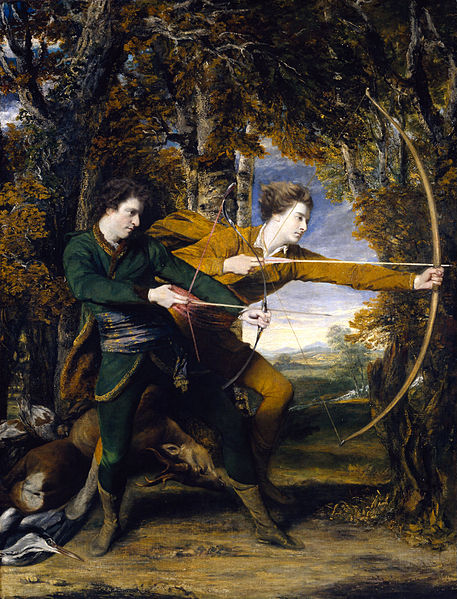It is the dawn of the 14th century and the hundredth anniversary of Austrian rule over Switzerland. Every little Heidi up in Heidiville and  every one of her goats are under the cruel dominion of the Habsburgs. It is November 18, 1307, and a legend is about to be born.
every one of her goats are under the cruel dominion of the Habsburgs. It is November 18, 1307, and a legend is about to be born.
It’s a day of grand celebration for the Austrians (the Swiss, not so much). Soldiers sing of the glories of the Emperor and his appointed local despot Gesler. The evil Gesler has had his hat placed on top of a pole, forcing the Swiss to bow and scrape and generally pay homage to the hat – one of those silly felt things with a feather in it. Gesler also commands that there should be dancing and singing to mark the century during which the Austrian empire has dominated the 98-pound weaklings of Switzerland. Gioachino Rossini and his Italian Racals are on hand to provide appropriate music.
Among the Swiss that day is one William Tell, known among his compatriots as a strong man, a mountain climber, and a whiz with the crossbow. Well, doesn’t Tell pass right by that hat, refusing to bow to it. And doesn’t his son (like father. . .) do just the same. Gesler is really put out and has the pair arrested. Aware of Tell’s amazing marksmanship, Gesler devises an ingenious punishment: Tell must shoot an apple off the head of his son. If he refuses, they both will be immediately executed. At this point, you can cut the tension with a Swiss Army knife. Rossini strikes up the band. As every schoolboy knows (if you don’t know, go find a schoolboy), Tell splits the apple with a single bolt (that’s an arrow) from his crossbow. Rossini’s Rascals break into a rollicking version of the William Tell Overture. (In the Lone Ranger, this same music was used to introduce the scene where Tonto shoots an apple from kemo sabe’s head.)
Ah, but sharp-eyed Gesler notices that Tell has taken not one but two crossbow bolts from his quiver. Gesler quizzes Tell, who answers that if he had killed his son, he would have used the second bolt on Gesler himself. Well, Gesler is now pretty pissed and has Tell carted off to prison.
Crossing Lake Lucerne, prison-bound, the soldiers, afraid their boat will founder, release strongman Tell to steer. Tell escapes, tracks down Gesler, places an apple on his head, and misses it by just that much. He shouts out, “Hi yo Switzerland,” Heidis and goats frolic on hillsides, Swiss watches begin keeping perfect time, and the Swiss Confederation is born.






